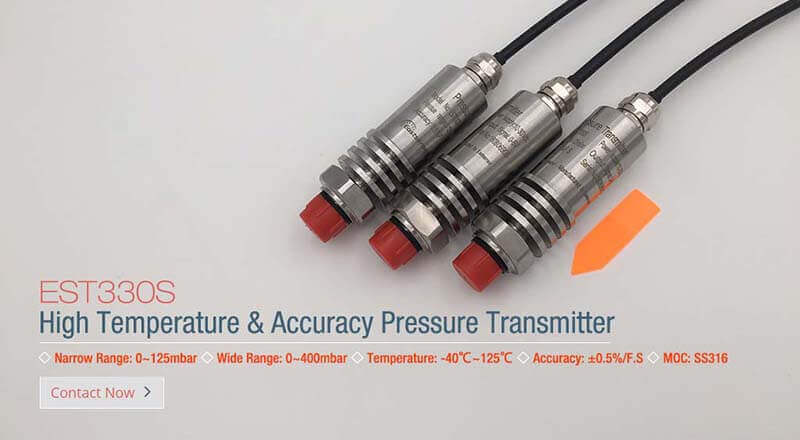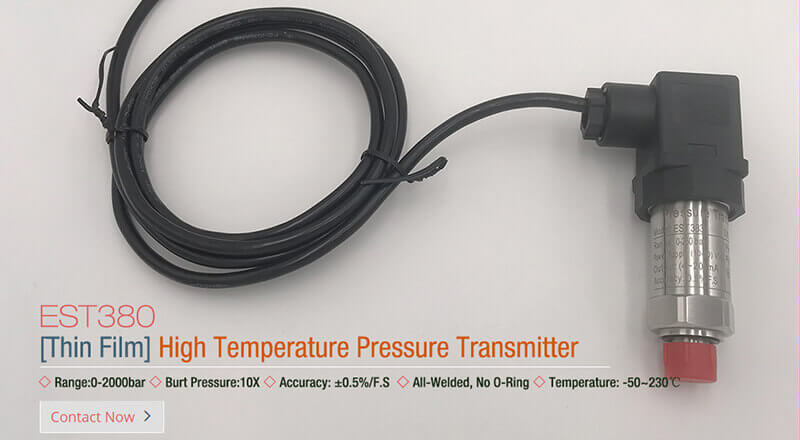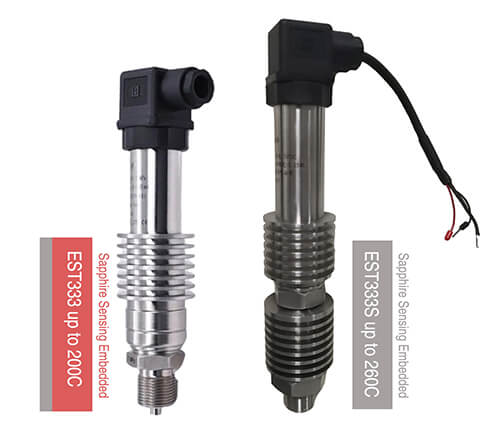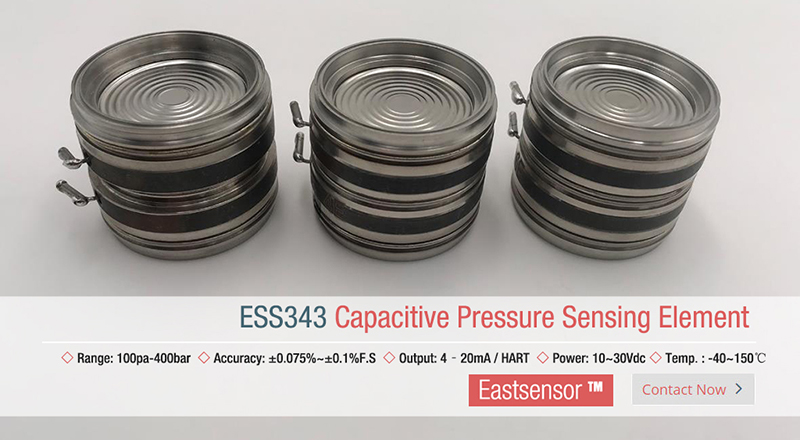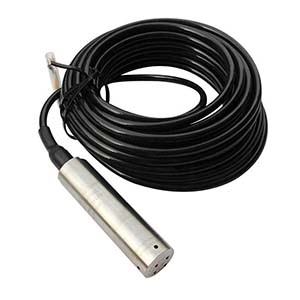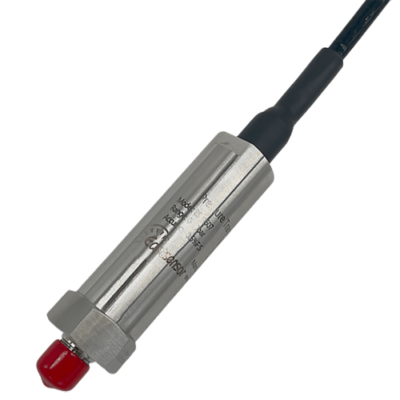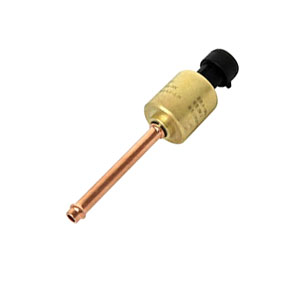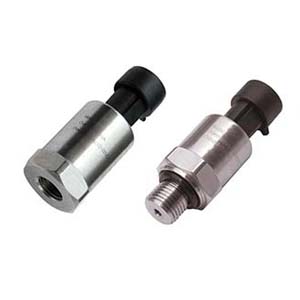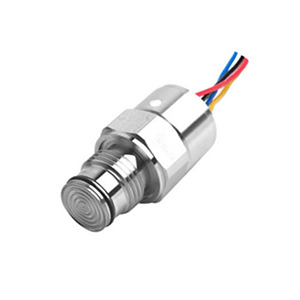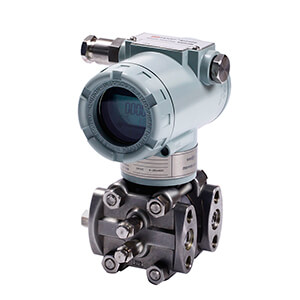Introduction
Pressure sensors play in many industries, from aerospace to oil and gas. Pressure sensors are crucial for monitoring and controlling processes that keep our world moving. But what happens when these sensors have to operate under high and even extremely high temperatures? The challenges can be substantial, but with the right approach, they can be overcome.
The Challenges Under High and Extreme High Temperatures
When pressure sensors are operating in high-temperature environments (above 125°C), several challenges can arise:
- Sensor Material :High temperatures can cause damage to the sensor materials, leading to a shorter lifespan of the device. They can also affect the sensor’s ability to maintain its specified accuracy over time.
- Thermal Drift: This is a major issue in high-temperature applications. Thermal drift is the alteration in sensor output resulting from ambient temperature changes. This can lead to inaccurate measurements and result in system malfunctions or breakdowns.
- Pressure Readings: High temperatures can cause gas or fluid to expand, leading to inaccurate pressure readings. This requires careful compensation or adjustment to ensure accurate measurements.
Types of Pressure Sensors Used in High-Temperature Applications
When dealing with high-temperature applications, it is crucial to select a pressure sensor that is not only able to withstand the intense heat but also maintain its accuracy and reliability. This cannot be overstated as the sensor’s readings directly impact the safety and effectiveness of a wide range of industrial operations.
To overcome these challenges, specific types of pressure sensors are designed for high-temperature applications:
- Piezoresistive Pressure Sensors: These are the most common type of pressure sensor and are generally suitable for temperatures up to 125°C (EST330S) (EST380). They function by altering their resistance as pressure changes. However, the resistive properties of the material can be affected by temperature, leading to thermal drift.
- Capacitive Pressure Sensors: Via filling with high-temperature fluid, these sensors (ESS343) operate by changing their capacitance with applied pressure. While they can handle higher temperatures (up to 260°C) than piezoresistive sensors, they also experience thermal drift, but typically less so.
- Sapphire Pressure Sensors: Sapphire pressure sensors (EST333) are specifically engineered to handle high temperatures (up to 260°C) encountered during pressure testing, making them suitable for various industrial applications where extreme temperature conditions are involved.
- Silicon-on-Insulator (SOI) Sensors: These sensors are specifically designed to operate in extreme high temperatures (up to 300°C) and harsh environments. They have a layer of silicon above an insulator substrate, reducing thermal sensitivity and improving reliability in high-temperature applications.
Selecting the right pressure sensor for high-temperature applications is critical because the wrong choice can lead to inaccuracies, decreased efficiency, and potential system failure. Some key factors to consider when selecting a pressure sensor for high-temperature applications include:
| Sensor Type | Material | Max. Operating Temperature for Sensor | Datasheet Download | Thermal Drift | Pros | Cons | Suitable Industries |
|---|---|---|---|---|---|---|---|
| Piezoresistive | Silicon, Metal Foil | Up to 125°C | EST330S | High | Low cost, Good sensitivity | Sensitive to temperature changes | General industrial applications |
| Thin Film Pressure Sensors | Metal Foil | Up to 150°C | EST380 | Moderate | Good balance of performance and cost-effectiveness | Not as heat-resistant as sapphire or SOI | Oil & Gas, Engine Testing |
| Capacitive | Metal Foil, Ceramic | Up to 200°C | ESS343 | Moderate | Good sensitivity, Can handle higher temperatures than piezoresistive | Moderate thermal drift | Aerospace, Automotive, Industrial |
| Sapphire Pressure Sensors | Sapphire | Up to 260°C | EST333 | Low | Excellent thermal properties, High stability | Expensive, Specialized for specific applications | Geothermal, Combustion Monitoring, Engine Testing |
| Silicon-on-Insulator (SOI) | Silicon | Up to 300°C | - | Low | Low thermal drift, High stability in harsh environments | More expensive | Oil & Gas, Aerospace, Automotive |
| Optical Pressure Sensors | Glass Fiber | Up to 300°C | - | Low | Can withstand high temperatures, Immune to electromagnetic interference | Require complex optical systems, Expensive | Aerospace, High-Speed Compression |
High-Temperature Pressure Sensors in Various Industries
High-temperature pressure sensors are particularly significant in a variety of sectors. For example, capacitive sensors operate by changing their capacitance with applied pressure. While they can handle higher temperatures (up to 200°C) than piezoresistive sensors, they typically experience less thermal drift.
These sensors are an ideal choice in industries like aerospace, automotive, and industrial manufacturing due to their unique benefits:
- Aerospace: These sensors provide critical pressure measurements in various high-temperature components of aircraft, such as engine systems and exhaust management.
- Automotive: In the automotive industry, they monitor pressure in various systems, including exhaust gas recirculation (EGR), combustion pressure in cylinders, and turbochargers, all of which operate at high temperatures.
- Industrial Manufacturing: Capacitive pressure sensors are critical in processes that involve high heat, such as industrial ovens and boilers, steam pressure control, and others.
Designing High-Temperature Pressure Sensors with Advanced Materials
Designing pressure sensors for high-temperature applications requires careful selection of materials. The materials not only need to withstand the high temperatures, but they also need to retain their physical and electrical properties under these extreme conditions. These materials play a critical role in increasing the performance and lifespan of pressure sensors under such conditions.
- Ceramics: Ceramic materials, such as alumina and zirconia, are often used in capacitive pressure sensors because they can withstand high temperatures (up to 200°C) while maintaining their dielectric properties. These materials are also resistant to thermal shock and have excellent chemical stability.
- Stainless Steel: This is a common material for the construction of the sensor body, particularly in piezoresistive pressure sensors. Stainless steel is known for its excellent heat resistance, durability, and corrosion resistance.
- High-Performance Alloys: High-performance alloys, such as Inconel, are used in extreme high-temperature applications (up to 1000°C). These alloys have exceptional thermal stability and resistance to oxidation and corrosion.
- Sapphire: This is used in high-temperature pressure sensors because of its excellent thermal properties. Sapphire sensors can withstand very high temperatures (up to 1000°C) and offer high stability.
| Material | Max. Operating Temperature | Key Properties | Common Applications |
|---|---|---|---|
| Ceramics (Alumina, Zirconia) | Up to 200°C | High dielectric properties, Thermal shock resistance, Chemical stability | Capacitive pressure sensors |
| Stainless Steel | Various, based on specific grade | Heat resistance, Durability, Corrosion resistance | Piezoresistive pressure sensors, Sensor body construction |
| High-Performance Alloys (Inconel) | Up to 1000°C | Exceptional thermal stability, Oxidation and corrosion resistance | Extreme high-temperature pressure sensors |
| Sapphire | Up to 1000°C | Excellent thermal properties, High stability | Sapphire pressure sensors |
When designing pressure sensors for high-temperature applications, it’s important to consider the material’s thermal properties, including its coefficient of thermal expansion, thermal conductivity, and specific heat capacity. These properties will impact the sensor’s performance and longevity in high-temperature environments. The correct choice of materials is thus critical for designing effective high-temperature pressure sensors.
Addressing the Limitations of Conventional Pressure Sensors
While functional and reliable for many applications, conventional pressure sensors often encounter limitations when operating in high-temperature environments. Understanding and adopting strategies to overcome these limitations is crucial to ensuring accurate and consistent performance in high-temperature applications.
Limitation of conventional pressor sensor
Below we listed the common issues faced by traditional pressure sensors in high-temperature applications include:
- Sensor Material Deterioration: High temperatures can cause sensor materials to deteriorate over time, affecting their lifespan and performance.
- Thermal Drift: Temperature changes can affect a sensor’s output, leading to errors in pressure measurement. This phenomenon is known as thermal drift and is a common issue in high-temperature applications.
- Inaccuracy in Pressure Measurement: High temperatures can cause the medium (gas or liquid) to expand, potentially leading to inaccurate pressure readings.
To address these challenges, several strategies can be take into consideration, include:
Temperature Compensation:
Advanced temperature compensation techniques are often used to negate the effects of thermal drift. There are several methods for achieving this:
- External Compensation: This involves using an external temperature sensor near the pressure sensor. The temperature reading from this sensor is used to correct the output of the pressure sensor, compensating for any effects due to temperature change.
- Internal Compensation: Some sensors directly incorporate an internal temperature sensor within the pressure-sensing element. The output of this internal sensor is used for compensation.
- Software Compensation: Sophisticated algorithms can compensate for thermal drift based on a temperature reading. This approach requires knowledge of the sensor’s temperature coefficient.
Sensor Protection:
- Thermal Isolation: This involves placing a material that is a poor conductor of heat between the high-temperature environment and the sensor. This could be an air gap, a thermal barrier coating, or an insulating material.
- Heat Sinks: Heat sinks can be used to dissipate heat away from the sensor. These are typically made of materials with high thermal conductivity.
- Protective Enclosures: A protective enclosure made from a material that can withstand high temperatures can be used to shield the sensor physically.
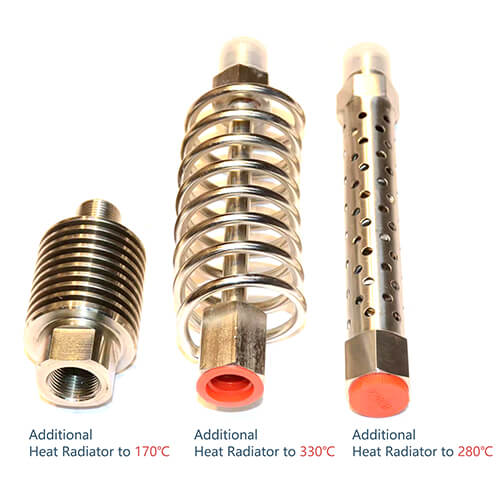
Internal Cooling:
In some situations, internal cooling of the sensor might be necessary:
- Coolant Circulation: Some sensors are designed to allow the circulation of a coolant. The coolant absorbs the heat from the sensor and carries it away, reducing the sensor’s temperature.
- Peltier Cooling: Peltier devices can be used for active cooling of sensors. They use an electric current to create a temperature differential, effectively “pumping” heat away from one side (the sensor) to the other.
Use of High-Temperature Materials:
As mentioned earlier, using materials that can withstand high temperatures is another strategy. This could involve the use of high-temperature alloys for the sensor body, ceramic or sapphire for the sensing element, and high-temperature compatible electronics. These materials should be selected based on their thermal expansion coefficients, thermal conductivity, and other relevant properties.
By implementing these strategies, it’s possible to significantly improve the performance of pressure sensors in high-temperature applications, ensuring reliable and accurate measurements over prolonged periods.
Solutions that Eastsensor Provide for Extreme High-Temperature Application
Solution A: Pressure Transmitter EST330S
- Working temperature: -40℃~125℃
- Storage temperature: -40℃~125℃
- Temperature compensation: 0℃~50℃ or tailor-made
- Heating Radiator: Yes
- Sensing technology: Silicon Piezo-resistance
- Pressure range: 0~125mbar/ 0-400mbar
- Accuracy: 0.5%/F.S
- Excitation power: 10-30Vdc
- Output signal: 4-20mA; 0-5V
- Electrical connection: as request
- Process connection: as request
- Click to Download: Datasheet of EST330S
Solution B: Pressure Transmitter EST380
- Working temperature: -40℃~150℃
- Storage temperature: -40℃~125℃
- Temperature compensation: -10℃~100℃ or tailor-made
- Heating Radiator: No
- Sensing technology: Thin-Film
- Pressure range: 0~1500bar
- Accuracy: 0.25%/FS | 0.5%/F.S
- Excitation power: 10-30Vdc
- Output signal: 4-20mA; 0-5V; RS485;IIC
- Electrical connection: as request
- Process connection: as request
- Click to Download: Datasheet of EST380
Solution C: Pressure Transmitter EST333
- Working temperature: -60℃~200℃
- Storage temperature: -60℃~155℃
- Temperature compensation: -10℃~70℃ or tailor-made
- Heating Radiator: Yes
- Sensing technology: Sapphire sensing
- Pressure range: 0~70mbar | 0~1000bar
- Accuracy: 0.25%/FS | 0.5%/F.S
- Excitation power: 10-30Vdc
- Output signal: 4-20mA; 0-5V; RS485
- Electrical connection: as request
- Process connection: as request
- Click to Download: Datasheet of EST333
Solution D: Pressure Transmitter EST333S
- Working temperature: -60℃~260℃
- Storage temperature: -60℃~155℃
- Temperature compensation: -10℃~70℃ or tailor-made
- Heating Radiator: Yes
- Sensing technology: Sapphire sensing
- Pressure range: 0~70mbar | 0~1000bar
- Accuracy: 0.25%/FS | 0.5%/F.S
- Excitation power: 10-30Vdc
- Output signal: 4-20mA; 0-5V; RS485
- Electrical connection: as request
- Process connection: as request
- Click to Download: Datasheet of EST333S
Solution E: Pressure Sensor ESS315
- Working temperature: -55℃~175℃
- Working temperature: -55℃~175℃
- Sensing technology: Thin-Film
- Pressure range: 0~1500bar
- Accuracy: 0.25%/FS | 0.5%/F.S
- Excitation power: 5Vdc
- Output signal: ≥1.4mV/V
- Sensor size: 15mm*15mm
- (Best for Under Well Drilling, Oil Well Drilling)
- Click to Download: Datasheet of ESS315
Solution F: Pressure Sensor ESS343
- Working temperature: 15℃~315℃ (Enhanced Silicone Oil Filled)
- Working temperature: -45℃~205℃ (Fluorocarbon Oil Filled)
- Sensing technology: Metal Capacitance
- Pressure range: 0~250bar
- Static: 250bar
- Accuracy: 0.1%/FS
- Excitation power: 10-30Vdc
- Output signal: 4-20mA
- Sensor size: 35mm*35mm
- (Suitable for Smart Pressure Transmitter)
- Click to Download: Datasheet of ESS343
Innovative Pressure Sensing Technologies for Extreme High-Temperature Application
In the face of challenges posed by extremely high-temperature environments, innovative technologies are emerging to provide robust and reliable pressure-sensing solutions. These technologies often offer enhanced durability, reduced thermal drift, and improved long-term stability.
- Infrared Thermography: Infrared thermography is a non-contact method that uses the infrared radiation emitted by an object to determine its temperature. This technology can monitor the temperature of a pressure sensor in real time and provide temperature compensation, enhancing the sensor’s performance in high-temperature environments.
- Fiber Optic Sensors: Fiber optic pressure sensors are immune to electromagnetic interference and can withstand extreme temperatures (up to 800°C). They use the change in light properties (intensity, phase, polarization, or wavelength) to measure pressure, providing high precision and reliability.
Conclusion
These innovative technologies represent the cutting edge of pressure sensing in extreme high-temperature environments. While traditional pressure sensors can face challenges in such conditions, these emerging technologies offer promising solutions to overcome these obstacles and deliver reliable, accurate, and long-lasting performance. As always, the choice of technology will depend on the application’s specific requirements.

